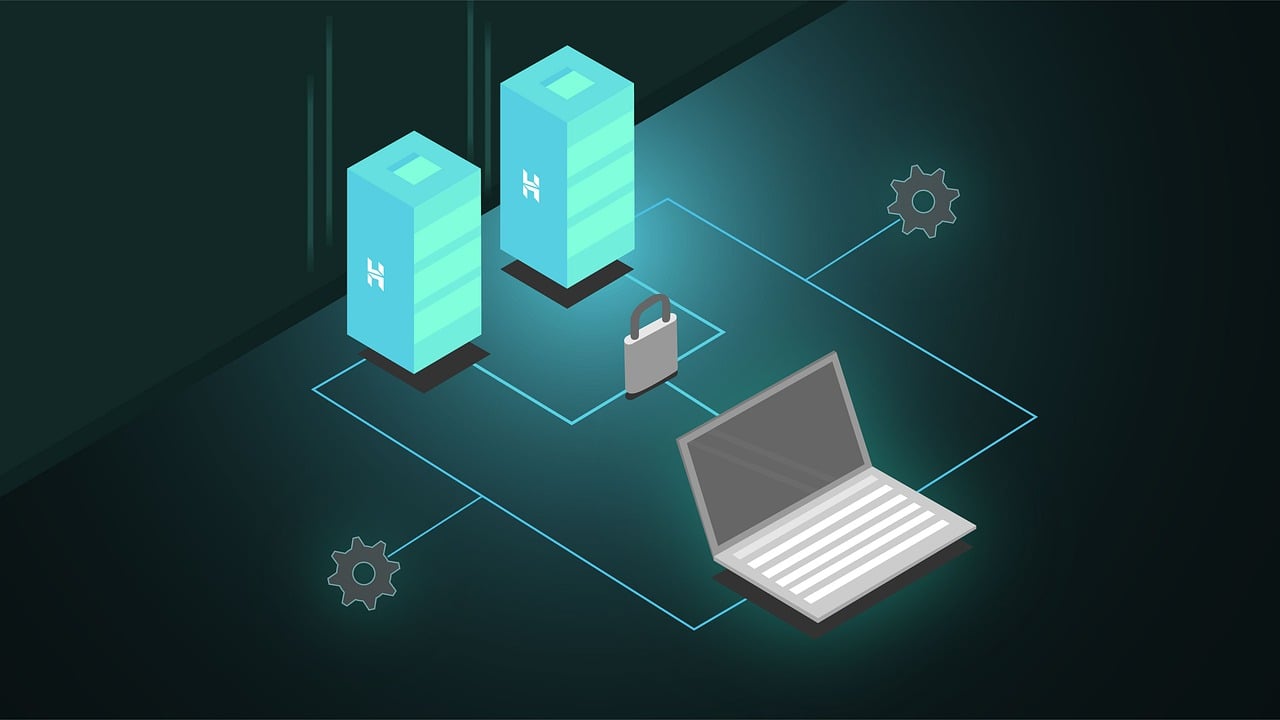Back in 2019, during my daily train commutes from Germany to Luxembourg, I dedicated my travel time to learning about data systems and database management. I dove into an Oracle learning book and explored various peripheral topics on the web. I took extensive notes, which I now share with you in this blog post. This summary covers the essential concepts I learned, offering a comprehensive overview of the fundamentals of data systems and database management.
1. Big Data & Analytics
Let’s start by exploring the world of Big Data and Analytics. This area is all about understanding how to handle vast amounts of data efficiently and effectively.
Data Applications: Data applications serve various purposes, including:
- Storage: Storing data in a structured format.
- Code Expensive Computations: Running complex calculations.
- Search/Filter: Efficiently searching and filtering data.
- Async Processing: Managing data streams or queues asynchronously.
- Batch Processing: Processing data in batches.
- Queues: Handling data in a first-in, first-out manner.
Key Concerns: In data systems, several key concerns need to be addressed:
- Fault vs. Failure: Understanding and preventing different types of failures.
- Reliability: Ensuring the system can tolerate outages and errors.
- Scalability: Designing systems to handle increasing loads.
- Maintainability: Making systems easy to operate, understand, and evolve.
Data Models and Their Use Cases
Next, let’s dive into the various data models and their specific use cases. Understanding these models helps in choosing the right database for the right task.
- Relational Databases:
- Use Cases: Business data processing, transactions, bookings, inventory management, CRM.
- Description: Store data in tables with predefined schemas using SQL for data manipulation.
- Schema on Write: The schema must be defined before inserting data.
- Sharding: Data partitioning across multiple databases for scalability.
- Transactions: Support ACID properties for reliable transactions.
- Examples: MySQL, Oracle, PostgreSQL.
- Pros:
- Strong ACID compliance.
- Mature ecosystem with extensive tools and community support.
- Powerful query capabilities.
- Cons:
- Schema rigidity.
- Complex and costly horizontal scaling.
- Document Model Databases:
- Use Cases: Document storage, scientific document libraries, content management systems, e-commerce catalogs.
- Description: Store data as documents (JSON or BSON) with nested structures.
- Schema on Read: Flexible schema, not enforced by the database.
- Data Locality: Documents can store related data together, improving read performance.
- Examples: MongoDB, CouchDB.
- Pros:
- Flexible schema design.
- Efficient for hierarchical data.
- Good performance for read-heavy operations.
- Cons:
- Limited ACID transactions across documents.
- Less powerful query capabilities.
- NoSQL:
- Description: “NoSQL” is a broad category that includes various types of databases not using SQL as their primary query language. This term often refers to databases designed for specific use cases and performance needs.
- Usecases: Large-scale distributed data storage, real-time web applications, big data analytics.
- Expressive Schema: Schemas can be more flexible and tailored to specific application needs.
- Examples: Cassandra (wide-column store), Redis (key-value store), Elasticsearch (search engine).
- Pros:
- Designed to handle large volumes of unstructured or semi-structured data.
- Often provide horizontal scalability and high availability.
- Suitable for specific workloads like caching, full-text search, or time-series data.
- Cons:
- Limited to specific use cases, may lack the general-purpose capabilities of relational databases.
- Consistency models can vary, often trading off strict consistency for availability and partition tolerance (CAP theorem).
- Graph Model:
- Usecases: Social networks, recommendation engines, fraud detection, network and IT operations.
- Description: Graph databases store data as nodes and edges, with properties on both. They are designed for efficiently managing and querying data with complex relationships.
- Relationships: Naturally represent Many-to-Many relationships.
- Can be simulated in Relational DB: Using Vertex and Edge tables, though with less efficiency.
- Examples: Neo4j, Amazon Neptune.
- Pros:
- Excellent for querying and analyzing complex relationships.
- Efficient for traversing relationships (e.g., finding shortest paths, exploring networks).
- Flexible schema, allowing properties to be added without major schema changes.
- Cons:
- Less mature tooling compared to relational databases.
- Not as well-suited for simple transaction processing or flat data models.
Handling Data at Scale
Moving on, let’s summarize how to handle data at scale, which is crucial as your data grows.
- Scalability and Reliability:
- Scalability: Design systems to handle increasing loads.
- Vertical vs. horizontal scaling.
- Elastic vs. manual resources.
- Reliability: Ensure systems tolerate outages and errors.
- Fault tolerance for hardware, software, and human errors.
- SLAs for latency and repair times.
- Scalability: Design systems to handle increasing loads.
- Transaction Processing vs. Analytics:
- OLTP: Online Transaction Processing for operational tasks.
- Small reads, random access writes.
- Used by end-users and web apps.
- OLAP: Online Analytical Processing for data analysis.
- Aggregated reads, bulk writes.
- Used by BI analysts for trend analysis.
- OLTP: Online Transaction Processing for operational tasks.
2. Innovative Technologies for Business
Now, let’s explore the innovative technologies that are transforming businesses through advanced data handling capabilities.
Big Data Warehousing vs. Conventional SQL:
When dealing with large-scale data, it’s essential to choose the right data warehousing solution. Let’s compare Big Data Warehousing with Conventional SQL.
Big Data Warehouses:
- Capabilities: Can handle massive amounts of data and are optimized for analytical access patterns.
- Use Cases: Ideal for businesses that need to process and analyze large datasets.
- Technologies: Examples include Hive, Spark SQL on Hadoop, and Facebook Presto.
- Pros:
- High scalability and performance for big data analytics.
- Supports complex queries and data transformations.
- Cons:
- Requires more complex setup and maintenance.
- Higher costs associated with storage and processing power.
Conventional SQL Bases or Spreadsheets:
- Capabilities: Suitable for smaller companies or less data-intensive tasks.
- Use Cases: Simple data management, small-scale reporting, and analysis.
- Technologies: Standard SQL databases and tools like Excel or Google Sheets.
- Pros:
- Easier setup and lower cost.
- Simpler management and maintenance.
- Cons:
- Limited scalability and performance for large datasets.
- Not suitable for complex analytical queries.
Data Flow and Encoding
Understanding how data flows within a system and how it is encoded is crucial for building efficient and reliable data systems.
Modes of Data Flow:
- Database Flow: Traditional approach involving direct database access and manipulation. This can introduce issues with data consistency and access speed.
- Services (REST/RPC): Modern approach that enables efficient, stateless communication between services. This enhances flexibility and scalability.
- Asynchronous Messaging: Allows for reliable, scalable communication, decoupling services and improving system robustness. Examples include message queues like Kafka or RabbitMQ.
Data Encoding & Evolution: Proper data encoding and handling schema evolution are essential for maintaining system integrity and performance over time.
Client-side vs. Server-side Types: Choosing the right encoding and handling schema evolution can significantly impact system flexibility and performance.
Format Comparisons:
- JSON: Flexible, human-readable, but less efficient for large datasets.
- XML: Schema-required, verbose, suitable for complex hierarchical data.
- CSV: Simple and human-readable, but lacks schema support.
- Protocol Buffers and Thrift: Binary encoded, efficient but not human-readable, ideal for inter-service communication.
- Avro: Good for binary data, supports schema evolution, balancing between readability and efficiency.
Row-oriented vs. Column-oriented Storage:
Different storage orientations cater to different data access patterns and use cases.
Row-oriented Storage:
- Storage Method: Rows stored sequentially.
- Use Cases: Suitable for transactional operations where entire rows need to be accessed.
- Pros: Easy to access full rows, straightforward for transactional data.
- Cons: Inefficient for analytical queries that access few columns, leading to more I/O operations.
Column-oriented Storage:
- Storage Method: Columns stored sequentially.
- Use Cases: Ideal for analytical queries that access specific columns.
- Pros: Better compression, efficient for column-specific queries.
- Cons: Not compatible with B-trees, works better with LSM-trees.
3. Fundamental Concepts in Data Systems
For our final part, let’s dive into some fundamental concepts that are crucial for understanding modern data systems.
Data Encoding & Evolution
Managing how data is encoded and evolves over time is critical for maintaining system integrity and performance.
- Client-side vs. Server-side Types: Choosing the right encoding and handling schema evolution can make a significant difference in system flexibility and performance.
- Format Comparisons:
- JSON: Great for flexibility and human readability.
- XML: Requires a schema and can be verbose, but is widely used for data interchange.
- CSV: Simple and human-readable, but lacks schema support.
- Protocol Buffers and Thrift: Both are binary encoded and efficient, but not human-readable. Ideal for inter-service communication.
- Avro: Excellent for binary data and schema evolution, balancing between human-readable formats and binary efficiency.
Database Storage Mechanisms:
Understanding the underlying storage mechanisms helps in optimizing data access and management.
- B-Trees:
- Used in relational databases for balanced tree data storage.
- Pros: Quick updates, efficient reads, and limited index size.
- Cons: Longer writes and frequent locks (which can cause concurrency issues).
Modes of Data Flow:
The method in which data flows within and between systems can impact performance and reliability.
- Database Flow: Traditional approach involving direct database access and manipulation.
- Services (REST/RPC): Modern approach enabling efficient, stateless communication between services.
- Asynchronous Messaging: Allows for reliable and scalable communication, decoupling services and improving system robustness.
Conclusion
In summary, understanding the fundamentals of data systems and database management involves grasping the different types of databases, their use cases, and the key considerations in scalability, reliability, and data flow. Here are some key takeaways:
Pros and Cons:
- Relational Databases:
- Pros: Strong ACID compliance, mature ecosystem, powerful queries.
- Cons: Schema rigidity, complex scaling.
- Document Databases:
- Pros: Flexible schema, efficient for hierarchical data.
- Cons: Limited transactions, less powerful queries.
- Big Data Warehousing:
- Pros: Handles large data, optimized for analytics.
- Cons: More complex setup and maintenance.
- Conventional SQL/Spreadsheets:
- Pros: Simple setup, suitable for small datasets.
- Cons: Limited scalability, less efficient for large-scale analytics.
Next Steps: To further your knowledge, consider studying:
- Advanced data modeling techniques.
- Distributed systems and their architectures.
- Real-world case studies of big data implementations.
- Practical applications of data encoding and messaging systems.



